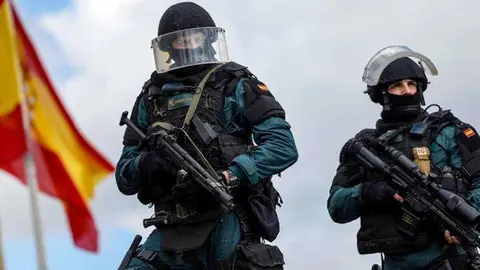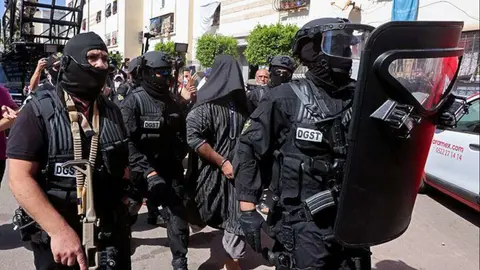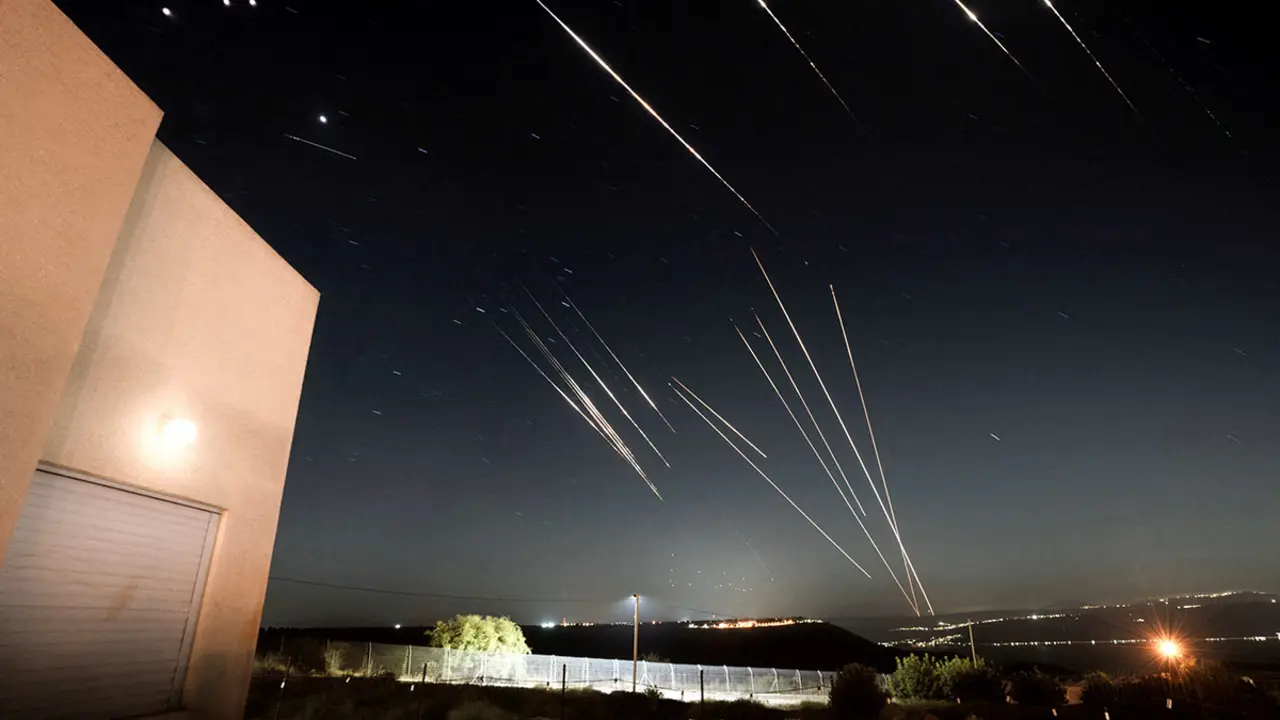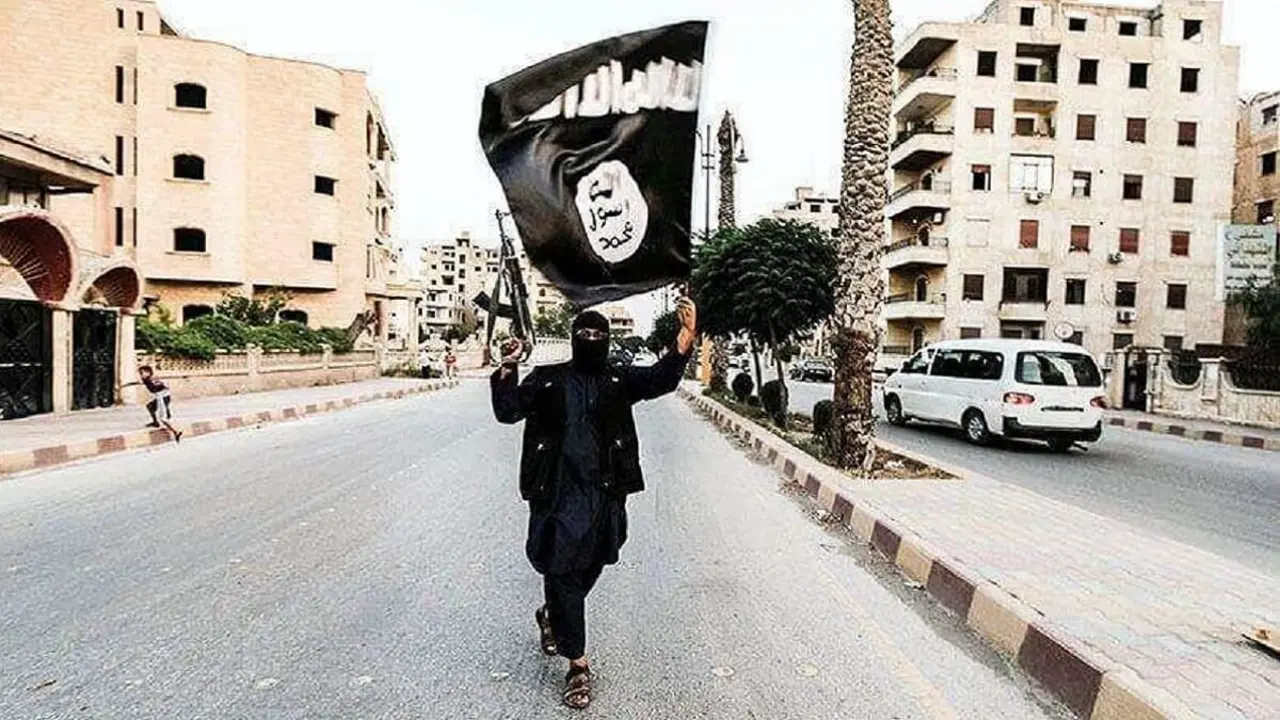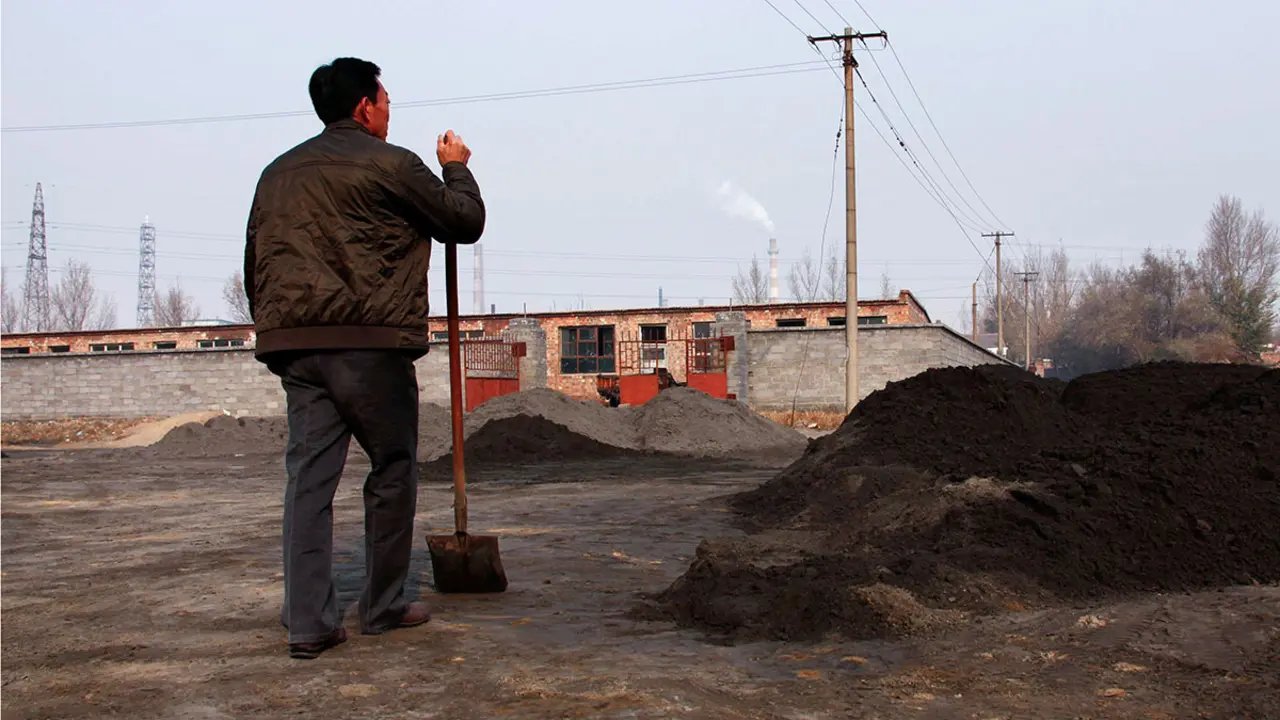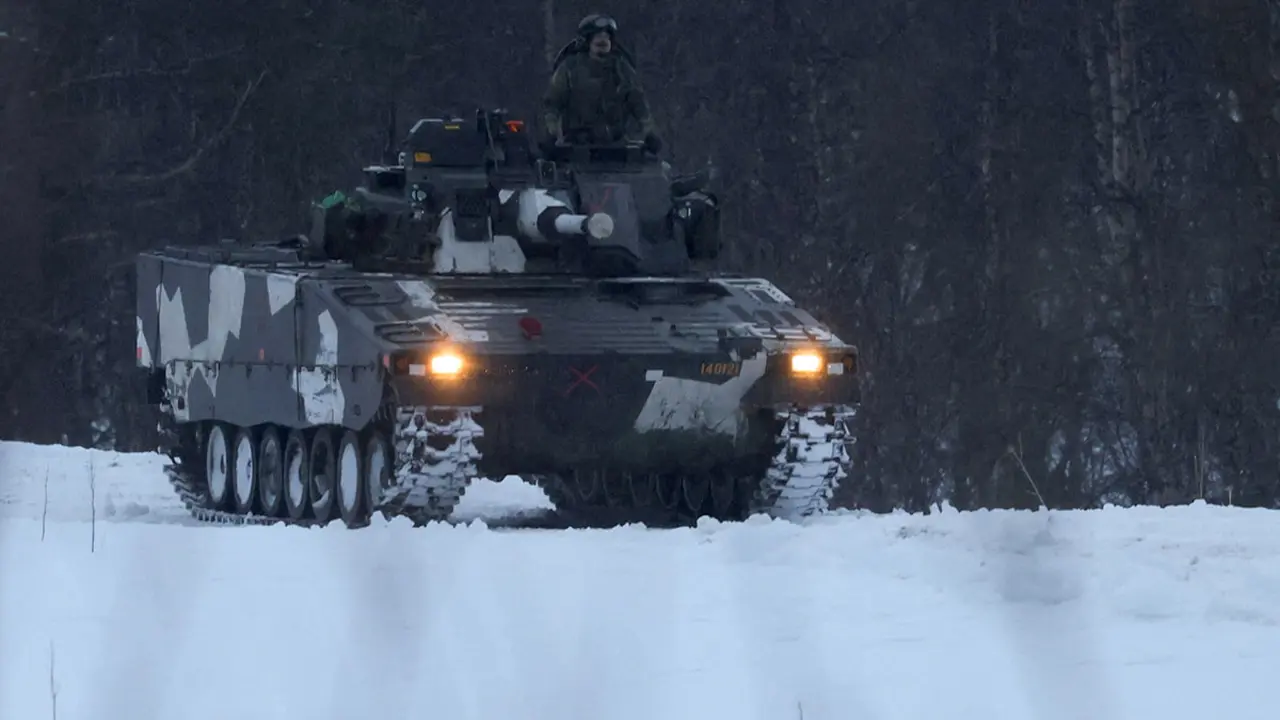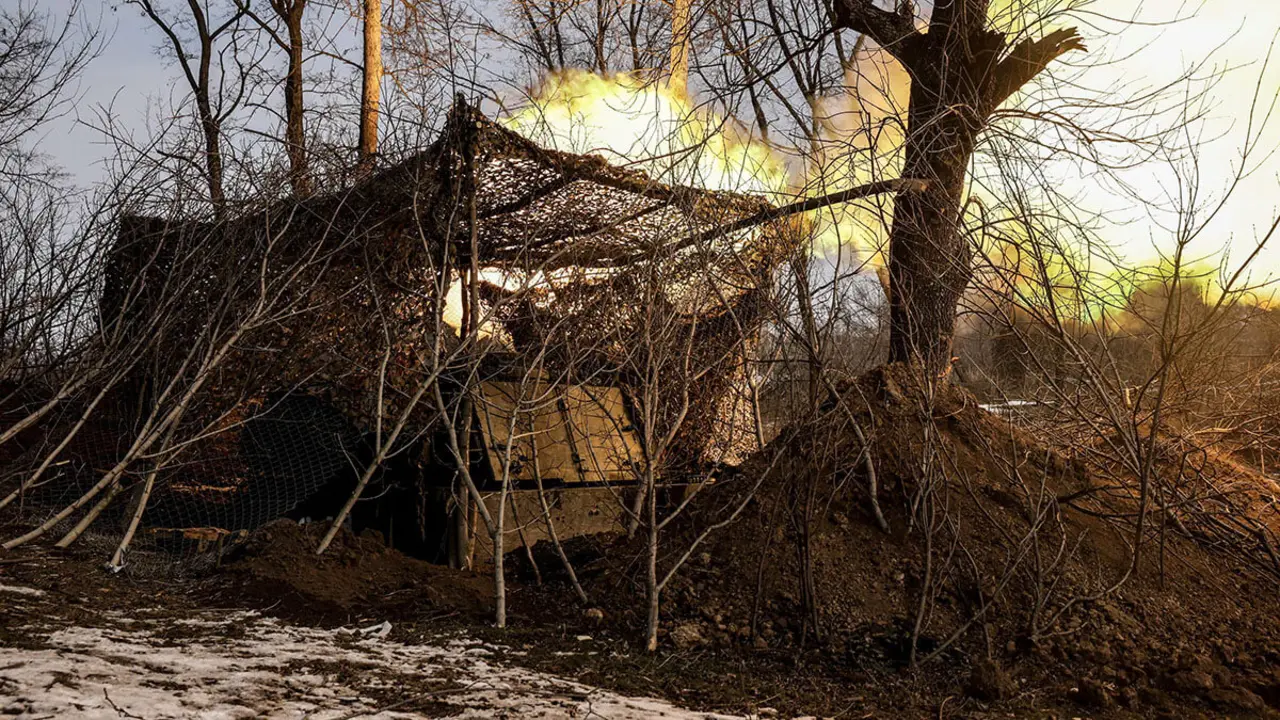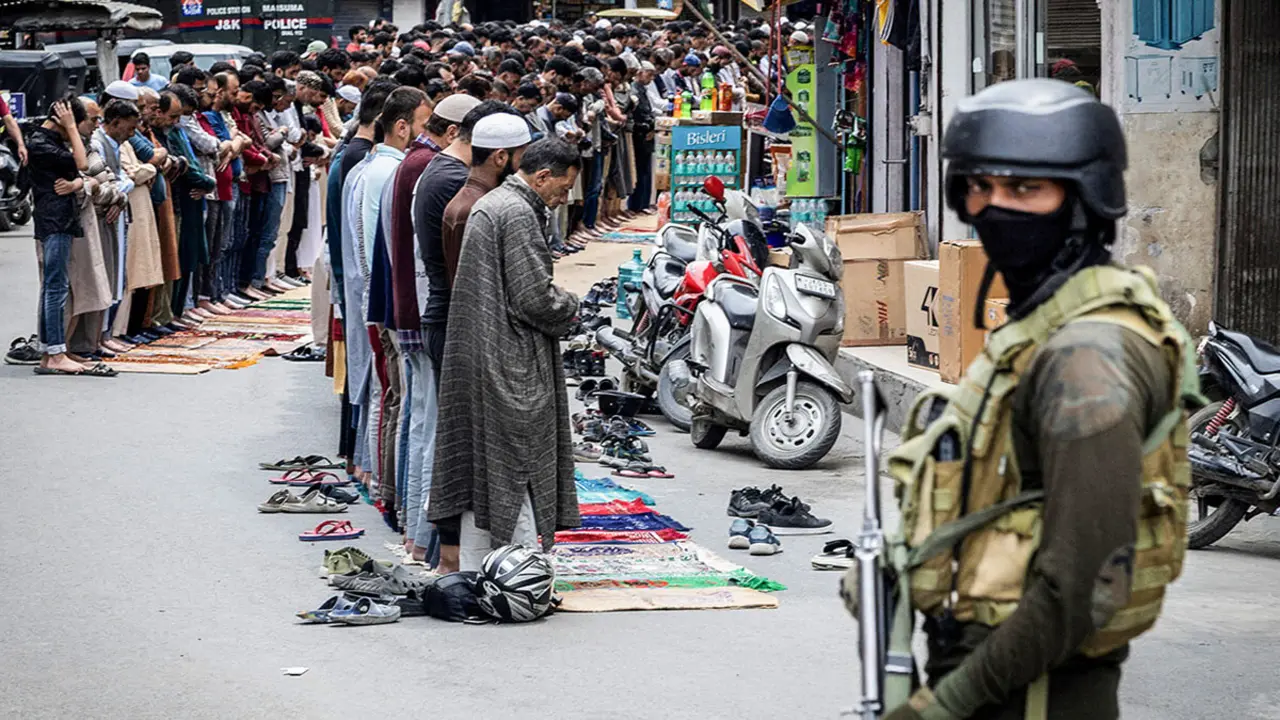Daesh entrenched in north-eastern Syria
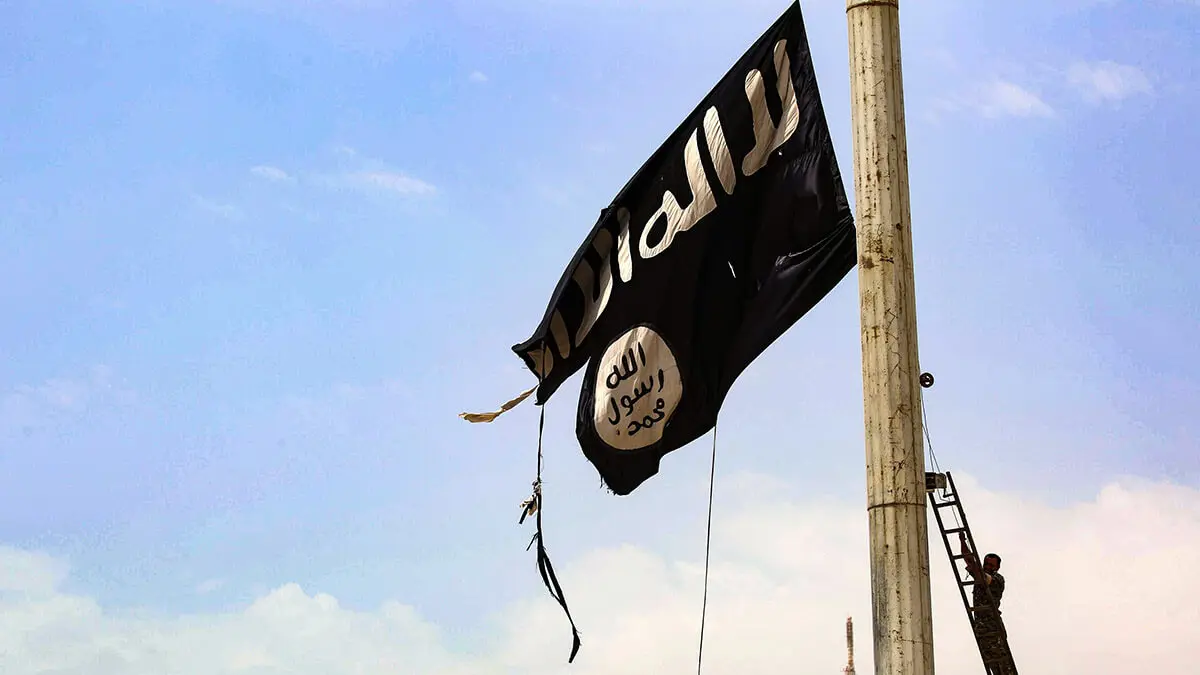
The Daesh terrorist organisation in March 2019 was militarily defeated in Baghuz but not exterminated. The military defeat plunged the organisation back into the insurgency, having caused thousands of deaths in Syria alone five years after that defeat, surviving clandestinely with coercion, robbery and kidnappings in rural and desert areas that are difficult to defend territorially in their entirety by the Syrian army and various allied militias, which the terrorist organisation takes advantage of to carry out terrible massacres.
Introduction
When Daesh began to spread in January 2014 in Iraq (Fallujah), few could have foreseen that, in July of that same year, its leader Abu Bakr al-Baghdadi would proclaim the false caliphate from the Al Nuri mosque in Mosul. These were months of intense fighting until the terrorist organisation managed to consolidate a large swathe of land between Iraq and Syria.
For five years Daesh managed to establish a military and administrative structure where it sought to exercise governance as a state, being no more than an occupying terrorist entity that, based on the terror practised by its Jihadists and its security brigades, Hisba and Al Jansaa (1), sought to subject the citizens of the occupied territories to severe punishments if they did not follow the organisation's postulates.
After its defeat, Daesh did not disappear and continued to exercise terror, from its hideouts in the Northeast and desert centre of Syria, from where it has been able to plan and carry out major ambushes against the counterinsurgency, because if anything was clear from the day after its military defeat it was that it was going to continue killing (2) and here one must ask why a terrorist organisation dismantled militarily, with thousands of dead in its ranks, with their families held in camps such as Al Roj and Al Hol in the Syrian town of Hasakah or in Al Sina prison in the same province, where thousands of the organisation's fighters are held, is still operating in Syria.
The surrounding area and the province of Deir Ezzor has been one of the strongholds where the aforementioned organisation has demonstrated its resilience over the last five years, but it has also demonstrated its capacity to extend since the end of 2023 to other provinces such as Homs, which has been punished on numerous occasions by terrorist activity this year, surpassing Deir Ezzor in terms of actions as we will see below, with the provinces of Hama, Raqqa and Hasakah also witnessing attacks and actions by the organisation.
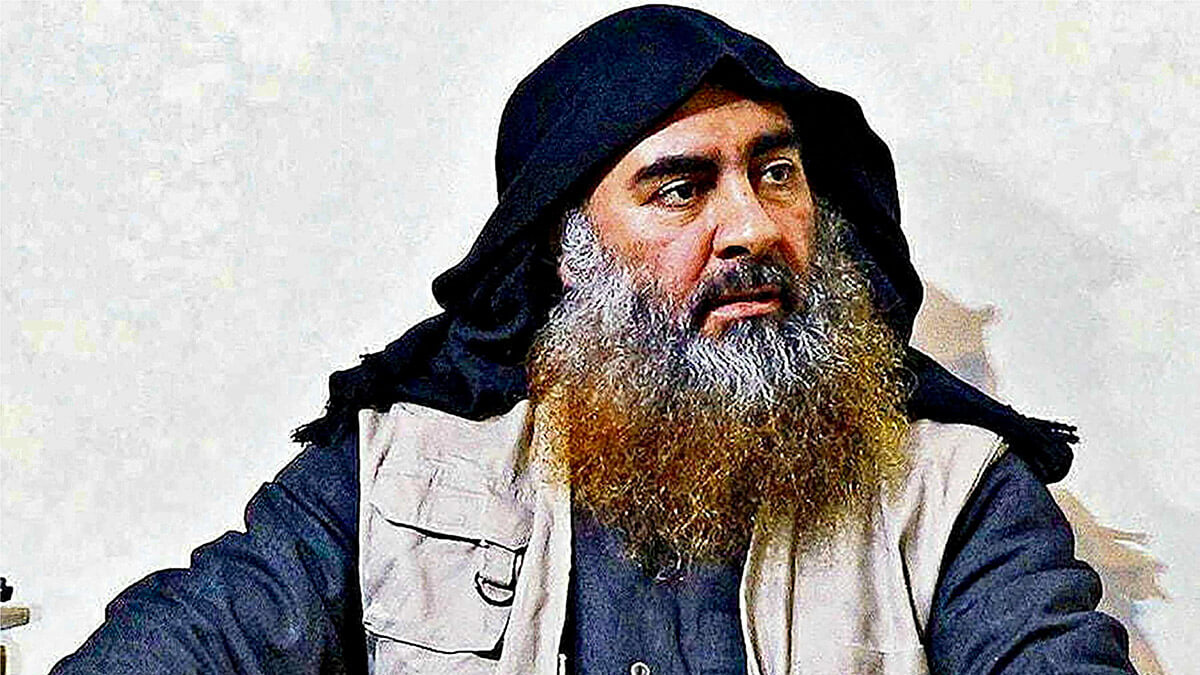
The permanent insurgency
The totalitarian nightmare of the false caliphate proclaimed in Mosul by the then leader of Daesh Al Baghdadi in July 2014, in which the terrorist organisation put the Syrian and Iraqi regime in check by wanting to build an Islamic state in the territories it occupied with thousands of jihadists throughout Syria and Iraq, ended in 2019, but the permanent insurgency began. Since then and according to the Syrian Observatory for Human Rights Daesh has carried out more than 2550 terrorist attacks in Syria resulting in approximately 4100 people killed (3), mostly Syrian Army soldiers, pro-Iranian militias and Kurdish fighters, but also more than 600 of those killed were civilians, many of them truffle pickers.
So far this year, civilian and military personnel have been continuously targeted. Truffle pickers, members of the Syrian Democratic Forces (SDF), Syrian army soldiers and allied militias have been killed in their hundreds. The most prominent epicentre of the actions is Homs, which has killed 222 counter-insurgents and civilians, displacing for the first time Deir Ezzor, which has had 116 deaths (4).
Homs province has been the target of brutal ambushes this year. In January, 14 Syrian soldiers were killed while travelling by bus in the desert area of the province (5). Again in the same province, in late March, an Iranian Liwa al-Quds militia vehicle carrying weapons and ammunition was ambushed by Daesh terrorists at a fake roadblock between Homs and Palmyra wearing Syrian Army uniforms (6). In another ambush in April in Homs, 22 militiamen from the pro-Iranian Quds Force were killed when they were attacked with missiles (7), and it was in April that Daesh carried out one of the most important attacks, as it managed to reach the road connecting Raqqa with Deir Ezzor, entering inhabited villages, killing four Syrian soldiers, confiscating military and civilian vehicles and looting several food shops (8).
In May, two regime soldiers and six members of the aforementioned Iranian Liwa al-Quds militia were killed in a rocket and machine gun ambush in the desert area of Homs on their way back from a tracking operation (9). Also in May, a car bomb exploded in Deir Ezzor near a Syrian Democratic Forces assault unit checkpoint, killing three Syrian Democratic Forces personnel (10). In June in Homs, an attack on a Syrian Army checkpoint killed five soldiers (11) and also in June, the terrorist organisation carried out another disturbing action similar to the one carried out on 27 March, also in Homs, when it intercepted a Syrian Army convoy carrying weapons and captured it, leading to a confrontation that caused the soldiers to flee (12). So numerous are the ambushes in Homs and so many are the casualties of the Syrian army and its allied militias that the terrorist organisation could have a core of informants in the area to provide it with accurate information.
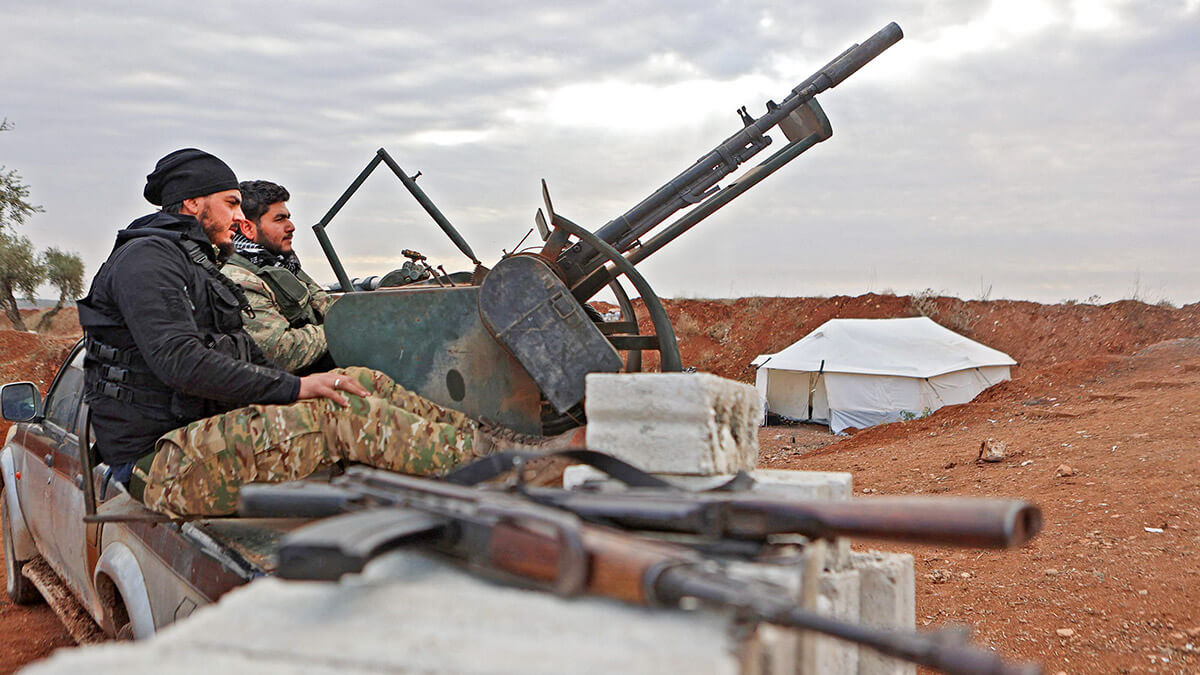
Even more disturbing was the attack and infiltration carried out by Daesh also in June in Albukamal (Deir Ezzor), in which several of its members, armed with pistols fitted with silencers and posing as Iranian security forces, managed to enter a military post of the so-called Syrian Hezbollah, killing four of its members, including a Lebanese leader (13). This daring infiltration operation indicates that it was certainly prepared in advance and was not the product of improvisation. In any case, this fact suggests an issue to be taken into account by our security forces, despite the fact that this event took place in Syria, namely the ability of Daesh members to infiltrate their facilities dressed in the uniforms of the security forces.
Other regions such as Raqqa, Hama, Hasakah have also suffered less intensely from terrorist violence, but it was no less lethal.
Starting with Raqqa, in January this year five members of the Syrian army were killed in the desert area of the province by members of a Daesh cell (14). Continuing with Hama in mid-February in the countryside, nine members of the Syrian Army were killed when their position was attacked by the aforementioned terrorists (15).
In late February in Hasakah, a Daesh cell killed two members of the defence forces in the Ghuwayran neighbourhood, the site of the Al Sina prison with thousands of Daesh prisoners (16).
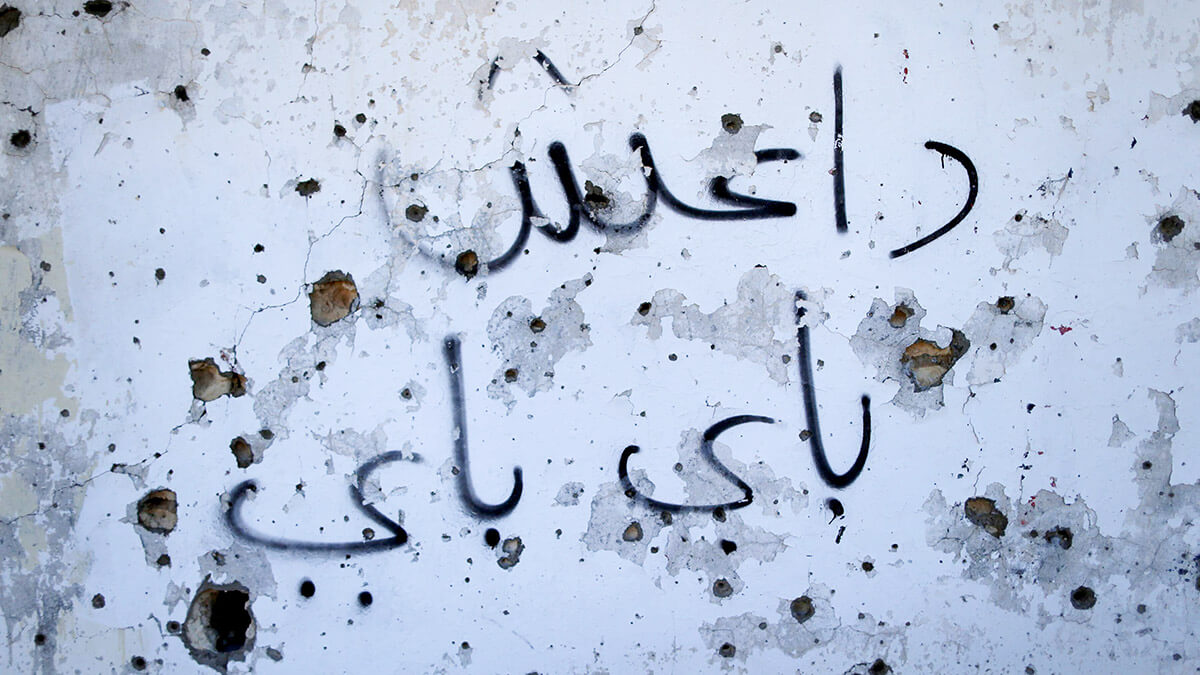
Civilian personnel have also been viciously ambushed by terrorist cells. If at the beginning of March this year Daesh killed 18 truffle pickers, at the end of the same month it killed 11 more truffle pickers in the desert area of Deir Ezzor. A kilogram of truffles can be sold for 25 dollars, while an average monthly salary is 18 dollars (17).
But Daesh would not only try to maintain a constant terrorist activity, the financial aspect would also be crucial for the survival of the remnants of the organisation, as it must have an income that can support the daily activity of its members. Long gone are the days of the false caliphate in which the organisation traded barrels of oil in occupied areas or received income from the plundering of antiquities such as those in the city of Palmyra, in contrast to the current situation, in which cattle rustling and extortion of oil traders and businessmen has become the norm in the areas where its cells are hidden.
The Zakat or donation, a sacred pillar in Islam, has been completely distorted by Daesh and has made it obligatory for many traders in Deir Ezzor and other areas where the organisation's cells survive to pay to the terrorist organisation, especially targeting businessmen and oil investors in the area. Refusing to pay and standing up to the organisation can have serious consequences. In June 2023 they attacked the home of an oil well investor for not paying Zakat and he miraculously escaped unharmed after confronting the terrorists (18), although in April 2024 another investor did not suffer the same fate and died of injuries sustained in an attack carried out by the terrorist organisation (19), not a few threatened businessmen are forced to pay the organisation or, without being a businessman, being a relevant leader of an armed militia is a reason for the Daesh to extort money from them and they have to pay in order not to lose their lives. This happened to a leader of the ‘National Defence’ in Deir Ezzor who, according to private sources handled by the media, came to pay 100,000 dollars, having escaped unharmed from several attacks months ago (20).
As can be seen, Daesh is continuously pursuing the oil business in Deir Ezzor, as it is located in areas controlled by both the Syrian army and the SDF.
The latest reported serious incident occurred this July against several oil tankers. The terrorists tried to stop the drivers who, when they refused, opened fire on the trucks causing material damage and then fled into the desert. According to him, one of the drivers stopped them to demand Zakat (21).
But we must not forget one of the most serious attacks carried out by Daesh against oil workers, who were travelling in three buses in the east of Deir Ezzor, which was carried out at the end of December 2022 in which twelve of them were killed (22). A few hours before the end of this article, the North Press Agency reported that the terrorist organisation attacked investors and oil workers on 20 July who refused to pay Zakat under terrorist imposition (23). Daesh has not missed an opportunity to attack and extort oil interests, which has increased considerably this year 2024.
As far as cattle rustling is concerned, in early March 2023, in the Syrian province of Deir Ezzor, several cells of the terrorist organisation killed a shepherd and kidnapped another to steal 1,000 sheep (24). In another attack in September 2023, in the same locality, they killed six shepherds (25) in order to steal their livestock and sell it on the black market to finance their cells. This June, in one of the deadliest attacks, two shepherds and six members of the national defence militia who were looking for them were killed by the terrorist organisation, but this time they did not steal the livestock, but killed most of the three hundred sheep (26). These are people who know the terrain very well, as well as the movements there, most of them being in the area controlled by Bashar el Assad's troops and allied militias.
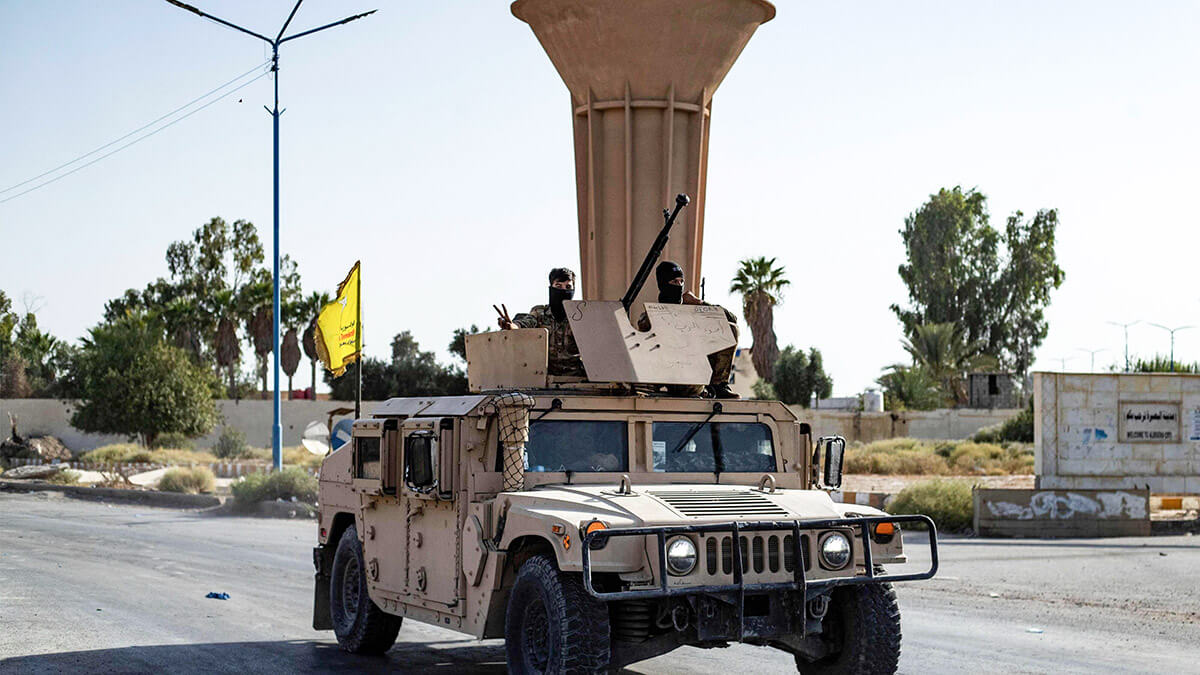
Conclusions on the current level of insurgency
The terrorist organisation's activity is deeply entrenched in the north-east and desert centre of Syria, mainly in Deir Ezzor and Homs, the latter 150 km from Damascus, with its tentacles reaching Hasakah, Raqqa and Hama. Their mobility in the first two provinces is constant, carrying out continuous attacks against civilians and the military, making the area very dangerous despite ongoing counterinsurgency operations (27). Assaults on small towns have been frequent. For the time being, it is outside the large urban areas heavily guarded by the counter-insurgency, but is able to move around rural and desert areas from where it plans its attacks and ambushes, especially since the entry on the scene of its latest and fifth leader Abu Hafs al-Hashimi al-Qurashi in August 2023 after the death in Afrin of Abu al-Hussein al-Husseini al-Qurashi in clashes with Syrian rebel groups.
The ability to spread territorially is worth noting, as its territorial scope has shifted from being primarily in Deir Ezzor to extending significantly to Homs, especially around Palmyra, extending its actions to Raqqa and Hama, not forgetting Hasakah and the Al Hol camp, where the terrorists' families are organised and many radicalised.
There are two actions that would indicate the preparation and capacity of the terrorists, one of which is the previously mentioned ambush of 27 March in Homs, where Daesh set up a fake roadblock with Syrian Army uniforms in order to ambush members of an Iranian militia allied to the Bashar regime, capturing the weapons and ammunition they were carrying after killing three members of these militias. This type of ambush was carried out by Daesh in its expansion in Iraq in the period 2013-2014 to detect Shiite militias. The other ambush that stands out for its sophistication is the one carried out dressed as Iranian militiamen against a Syrian Hezbollah post in Abukamal, killing four militiamen, including a Lebanese commander, in which the attackers were armed with pistols with silencers.
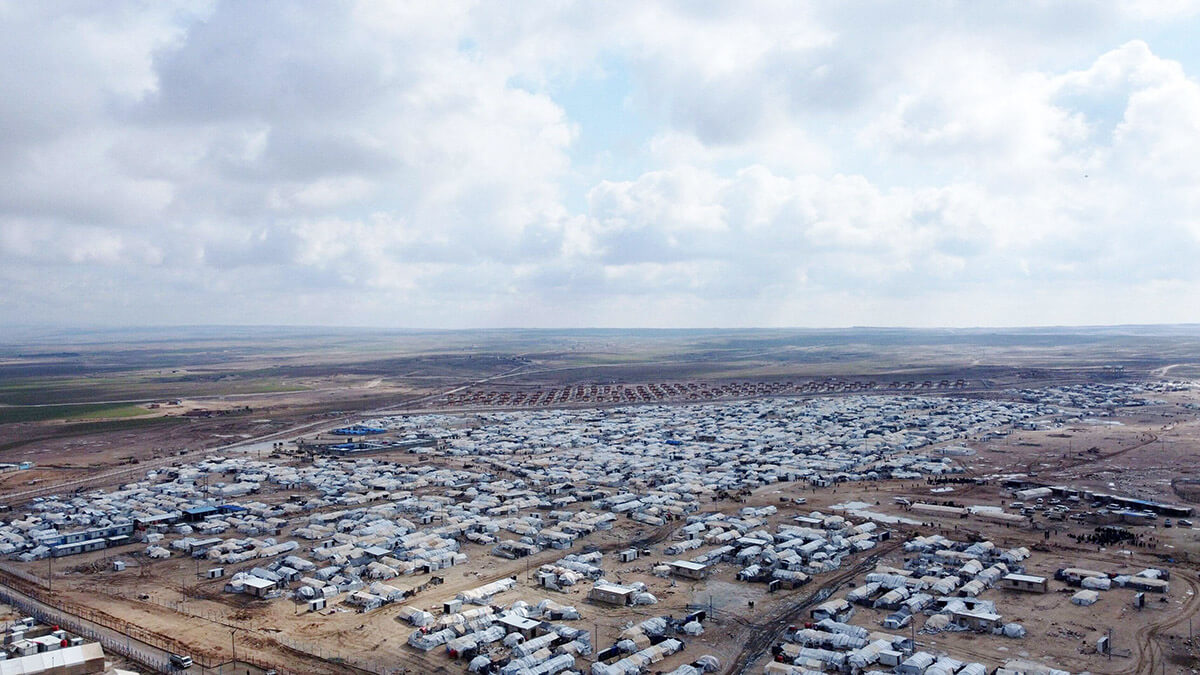
Daesh has carried out several suicide car bombings this year. In May this year it killed three members of the SDF when a suicide car exploded at its checkpoint east of Deir Ezzor, but in early June another suicide driver detonated his vehicle at the entrance of an SDF unit (28). Such actions were very common in the days of the false caliphate, when Daesh was retreating in Raqqa and Mosul. After their defeat in Baghuz, these types of ambushes were reduced, the most important being in January 2022 in the assault on Al Sina prison in Hasakah where two truck bombs crashed with suicide drivers into the walls of the prison which houses thousands of jihadist prisoners. The explosion was followed by an assault on the prison by a large number of Daesh terrorists. After a week of clashes with the SDF, the situation in and around the prison was brought under control (29).
As for Daesh's arsenal, the organisation does not have the heavy weapons it had in its time of expansion, although it has carried out attacks with missiles, rockets, grenade launchers and improvised explosive devices (IEDs) as seen in some of the ambushes reflected in this article.
They would not be able to carry out assaults such as the one on Al Sina (Hasakah) prison for the time being, but it is all a matter of time if they have the capacity and manpower to do so again, given the Daesh recruitment effort being carried out locally in north-western Syria among young men (30). In April, the US Central Command put the number of Daesh fighters in Syria and Iraq at approximately 2,500, and a report by UN intelligence services even increased this figure to between 3,000 and 5,000 Daesh fighters in the two countries (31), although the situation is not the same in Syria as in Iraq. While in Syria the total number of attacks is two-thirds, in Iraq the number has decreased significantly, although in May Daesh killed five members of the Iraqi army in a rural area between Diyala and Salahuddin (32), the most serious attack carried out during the year 2024.
As has been seen, the level of violence reached in Syria this year is worrying, which means that if in the future they manage to have a greater war capacity they will begin to assault larger towns or openly attack larger battalion-type counterinsurgency units and militias or carry out actions against prisons such as Al Sina as they did in 2022, where thousands of Jihadist prisoners are being held.
As for the ambushes that the Syrian army has suffered when moving along the routes, especially in Homs, this may be due to several factors, including the fact that these are large areas of terrain that are very difficult to control for the most part, as this would require the deployment of numerous personnel so that the posts carried out would be effective in detecting the cells of the terrorist organisation and thus the routes would be safer, with the prior work of the Syrian intelligence services to counteract the terrorists and collaborators in the area being very important for this. But the reality is that a certain fragility is being conveyed and the fact is that Bashar's army has been at war for thirteen years against all its enemies, be it Daesh, the paramilitary Syrian National Army of the rebels strong in part of Aleppo or the jihadists of Hayat Tahrir al Sam who hold a large part of the occupied Idlib province. But the Syrian Army is not alone, its allies of the Iranian militias contribute with their military forces to reduce the pressure of the insurgency and even so they have suffered numerous and deadly ambushes, such as the Kurdish troops of the Syrian Democratic Forces that in areas under Kurdish autonomy such as Raqqa, part of Dier Ezzor, Hasakah, contribute continuously where they are deployed to the pursuit of the Daesh terrorists, carrying out successful operations, some of them with support from US troops and aviation.
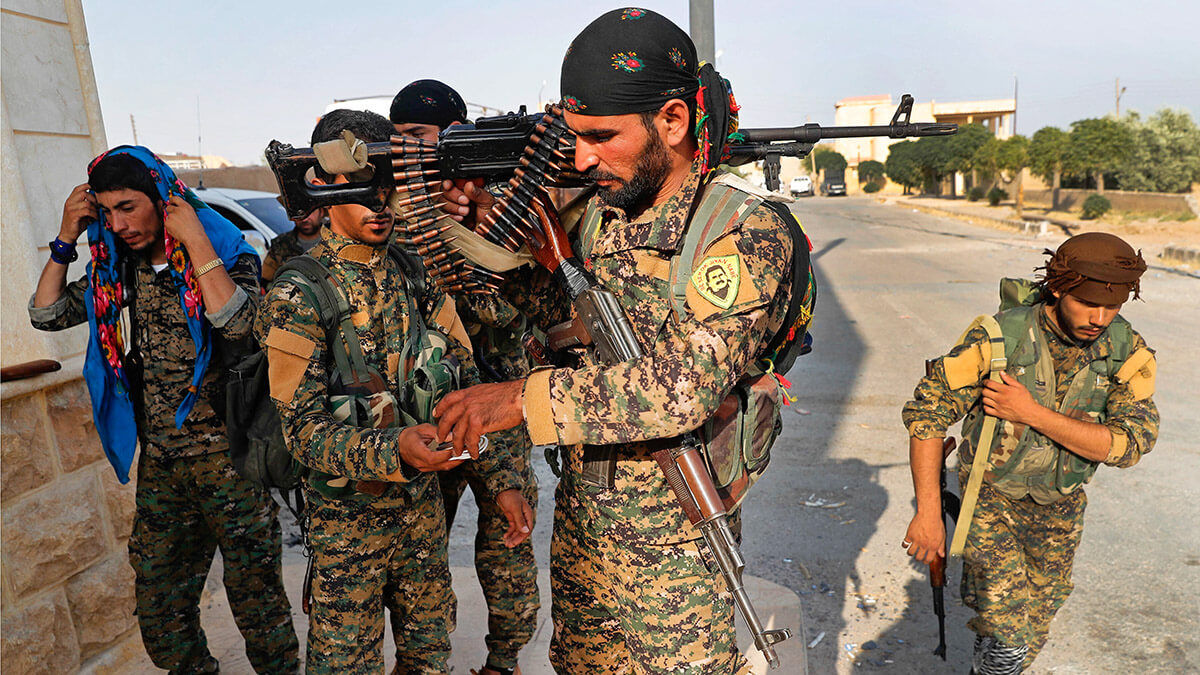
But it must be taken into account that the SDF has limited resources and part of these resources are used to control the camps where the relatives of the jihadists are in Al Hol and Al Roj, as well as the prison of Al Sina, as these are very sensitive places for the Daesh, which is undoubtedly taking them into account in order to free them. All in all, the Kurdish forces have given ample proof of standing up to the terrorist organisation and this has cost them numerous deaths this year despite the brilliant operations against the aforementioned terrorist organisation.
To conclude, Daesh in Syria does not currently have the capacity to storm cities or establish a new caliphate as it once did, but its level of insurgency has led it to entrench itself in certain rural areas in central and northeastern Syria. This would force counterinsurgency forces to coordinate resources to reduce the organisation to a practically non-existent entity, otherwise it will bide its time to expand again, and this time not from Iraq to Syria, but the other way around.
Luis Montero Molina, political scientist and analyst at the OCATRY Observatory and Sec2Crime.
Master in International Geostrategy and Jihadist Terrorism.
BIBLIOGRAPHY
1- SWI.swissinfo. 19 de junio del 2015. Raqa, una ciudad modelo para el EI e infierno para muchos. https://www.swissinfo.ch/spa/raqa-una-ciudad-modelo-para-el-ei-e-infierno-para-muchos/41501848
2- RTVE. Fuente: Informe ONU. 07/08/2019. Un informe de la ONU advierte de que el Daesh sigue activo. https://www.rtve.es/play/audios/14-horas/informe-onu-advierte-daesh-sigue-activo/5362277/
3- THIS IS BEIRUT. Fuente: OSDH. 29 de junio de 2024. Daesh ha matado a 4.100 personas en Siria desde que perdió territorio. Original en inglés. https://thisisbeirut.com.lb/world/267931
4- OSDH. 13 de julio del 2024. En medio del fracaso de la operación militar liderada por Rusia para frenar la actividad de ISIS | 23 soldados del régimen mueren en ataques de ISIS en diez días en el desierto sirio. Original en inglés. https://www.syriahr.com/en/338769/
5- OTHMAN Ahmad. Diario North Press Agency. 9 de junio del 2024. 14 Syrian soldiers killed, 20 injured in Syrias Palmyra in ISIS attack. Original en inglés. https://npasyria.com/en/109806/
6- ABDURRAHMAN Omar. Diario North Press Agency. 27 de marzo del 2024. ISIS mata a tres militantes de Liwa al-Quds en Homs, Siria. Original en inglés. https://npasyria.com/en/112623/
7- JUWEID Ardo. Diario North Press. 19 de abril. ISIS mata a 22 militantes apoyados por Irán en el desierto sirio. Original en inglés. https://npasyria.com/en/113318/
8- ABDURRAHMAN Omar. Diario North Press Agency. 6 de abril del 2024. ISIS lanza un feroz ataque contra las fuerzas gubernamentales en Deir ez-Zor, Siria. Original en inglés. https://npasyria.com/en/112923/
9- ABDURRAHMAN Omar. Diario North Press Agency. 20 de mayo del 2024. Mueren dos soldados del gobierno y seis militantes respaldados por Irán en el desierto sirio. Original en inglés. https://npasyria.com/en/114101/
10- OSDH. Deir Ezzor | Siete miembros de los Comandos muertos y heridos en la explosión de un coche bomba del EI. 10 de mayo del 2024. Original en inglés.
https://www.syriahr.com/en/333265/
11- A.K. Diario ANHA. Fuente: OSDH. Cinco muertos por ISIS en el campo de Homs. 8 de junio del 2024. 08 de junio del 2024. Original en inglés. https://www.hawarnews.com/en/5-killed-by-isis-in-homs-countryside
12- ABDURRAHMAN Omar. Diario North Press Agency. ISIS confisca cargamento de armas en el desierto sirio. 24 de junio de 2024. Original en inglés. https://npasyria.com/en/114896/
13- THE EUPHRATES POST. Una célula del ISIS se infiltra en las filas de una milicia iraní en Albukamal y mata a varios de ellos. 15 de junio del 2024. Original en árabe. https://euphratespost.net/%d8%ae%d9%84%d9%8a%d8%a9-%d9%84%d8%aa%d9%86%d8%b8%d9%8a%d9%85-%d8%a7%d9%84%d8%af%d9%88%d9%84%d8%a9-%d8%aa%d8%ae%d8%aa%d8%b1%d9%82-%d8%b5%d9%81%d9%88%d9%81-%d9%85%d9%8a%d9%84%d9%8a%d8%b4%d9%8a%d8%a7/
14- OTHMAN Ahmad. Diario North Press Agency. Un segundo ataque del ISIS mata a cuatro funcionarios gubernamentales en Raqqa, Siria. 9 de enero de 2024. Original en inglés. https://npasyria.com/en/109809/
15- OSDH. El resurgimiento del EI | 12 miembros de las fuerzas del régimen muertos y heridos en el desierto de Hama. 13 de febrero del 2024. Original en inglés. https://www.syriahr.com/en/325425/
16- OSDH. El resurgimiento del EI | Los hombres del EI asesinan a dos miembros de la Defensa Autónoma en el barrio de Ghuwayran en Al-Hasakah. 22 de febrero del 2024. Original en inglés. https://www.syriahr.com/en/326155/
17- LUCENTE Adam. Diario Al Monitor. Fuente: OSDH. ISIS mata a 11 cazadores de trufas en Siria. 25 de marzo del 2024. https://www.al-monitor.com/es/originals/2024/03/isis-mata-11-cazadores-de-trufas-en-siria#ixzz8fyYkdmLg
18- MUSTAFA Maher. Diario North Press Agency. Atacantes desconocidos atacan la casa de un inversor en pozos petrolíferos en Deir ez-Zor, Siria. 24 de junio de 2023. Original en inglés. https://npasyria.com/en/100055/
19- OSDH. Tras exigir el Zakat, células del ISIS atacan la casa de un inversor petrolero con una granada de mano. 28 de abril del 2024.Original en inglés. https://www.syriahr.com/en/332302/?__cf_chl_tk=I6fgb9lLZ4EOG442acA3uzr5KnBlacTv845sPz99BRU-1720997644-0.0.1.1-6697
20- EUPHRATES POST. 26 de enero del 2024. Un líder de la milicia de Defensa Nacional paga regalías al ISIS. Original en árabe. https://euphratespost.net/a-leader-in-the-national-defense-militia-pays-royalties-to-isis/
21- ABDURRAHMAN Omar. North Press Agency. 9 de julio del 2024. Militantes del ISIS atacan a petroleros en Deir ez-Zor. Original en inglés. https://npasyria.com/en/115250/
22- ARABNEWS. Doce trabajadores petroleros mueren en ataque terrorista de Daesh en el este de Siria. 31 de diciembre del 2022. Original en inglés. https://www.arabnews.com/node/2224141/middle-east
23- ABDURRAHMAN Omar. North Press Agency. 20 de julio del 2024.ISIS lleva a cabo dos ataques en Deir ez-Zor. Original en inglés. https://npasyria.com/en/115482/
24- Observatorio Sirio de los Derechos humanos (OSDH). 04 de marzo del 2023. ISIS mata a un pastor, secuestra a otro y roba 1.000 ovejas. Original en inglés. https://www.syriahr.com/en/290505/
25- HISPANTV. Fuente: Agencia SANA. 10 de septiembre del 2023. Daesh mata a seis pastores en Siria. https://www.hispantv.com/noticias/siria/571699/terroristas-daesh-matan-pastores
26- ARAB NEWS. AFP Fuente: OSDH. 4 de julio del 2024. Militantes de Daesh matan a ocho personas en el desierto de Siria. Original en inglés. https://www.arabnews.com/node/2543486/medio-oriente
27- SDF PRESS CENTER. 4 de junio del 2024. Nuestras Fuerzas De Autodefensa, Apoyadas Por La Coalición, Eliminaron Con Éxito Una Célula Terrorista Del ISIS En Deir Ezzor. Original en inglés. https://sdf-press.com/en/2024/06/our-sdf-supported-by-the-coalition-successfully-eliminated-an-isis-terrorist-cell-in-deir-ezzor/
28- OTHMAN Ahmad. Digital North Press Agency. 6 de junio del 2024. ISIS se atribuye la responsabilidad del ataque al puesto de las SDF en Deir ez-Zor. Original en inglés. https://npasyria.com/en/114521/
29- ZULOAGA J.M. Digital La Razón. 23 de enero del 2022. El Estado Islámico dice haber liberado a 800 de sus presos en una cárcel de Siria. https://www.larazon.es/internacional/20220123/5c36qf3zpfd6ha5l62fjkrxnuu.html
30- ETANA. 15 de julio del 2024. Informe militar sirio: noreste de Siria, junio de 2024. Original en inglés. https://etanasyria.org/syria-military-brief-north-east-syria-june-2024/
31- THE EUPHRATES POST. 20 de julio. Estados Unidos teme el regreso de ISIS a Siria e Irak. Original en árabe. https://euphratespost.net/%d8%a7%d9%84%d9%88%d9%84%d8%a7%d9%8a%d8%a7%d8%aa-%d8%a7%d9%84%d9%85%d8%aa%d8%ad%d8%af%d8%a9-%d8%aa%d8%ae%d8%b4%d9%89-%d8%b9%d9%88%d8%af%d8%a9-%d8%aa%d9%86%d8%b8%d9%8a%d9%85-%d8%a7%d9%84%d8%af%d9%88/
32- MAKARY Adam y TAHA Jaidaa . Agencia REUTERS. 14 de mayo del 2024.El Estado Islámico se atribuye el ataque a un puesto militar en el norte de Irak. Original en inglés. https://www.reuters.com/world/middle-east/islamic-state-claims-attack-army-post-northern-iraq-2024-05-14/


